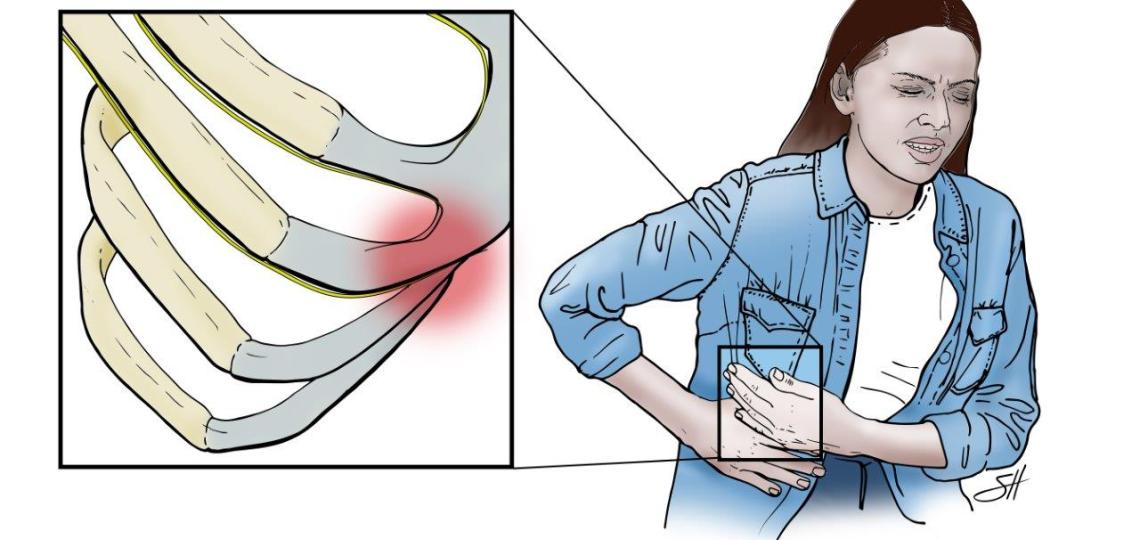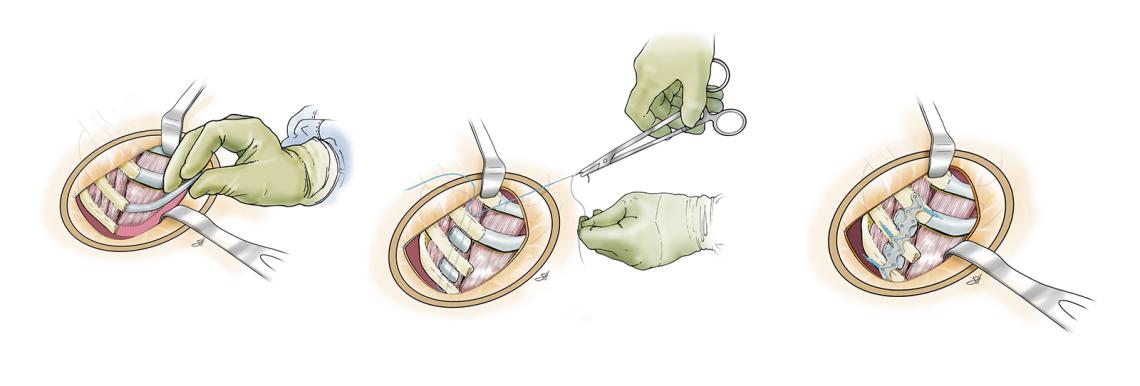Slipping rib syndrome is a medical condition where one or more of the lower ribs become hypermobile, often resulting in pain and discomfort. This occurs when the cartilage that connects the ribs to the sternum or to each other becomes weak or damaged, allowing the ribs to move or slip out of their normal position and push on the nerve.
Slipping rib syndrome is a straightforward condition with potentially severe consequences for those affected. Without proper diagnosis and treatment, it may lead to long-term disability and chronic pain.
Symptoms of Slipping Rib Syndrome
- Pain in the lower chest or upper abdomen, often described as sharp or stabbing.
- A feeling of "popping" or "clicking" in the ribs.
- Pain that worsens with certain movements, such as twisting or bending.
- Sometimes, the pain radiates to the back or shoulder.
Diagnosing Slipping Rib Syndrome
- Clinical examination where a doctor may try to reproduce the symptoms by applying pressure to the ribs.
- Imaging tests such as CT scans, X-rays, MRI or ultrasound may be used, although they are often reported as normal.
- Diagnostic injections of local anesthetic can help confirm the diagnosis if unclear by physical examination.
Treatment of Slipping Rib Syndrome
Non-interventional treatments such as rest, avoiding aggravating activities, physical therapy and pain management with medications or injections.
In cases where conservative treatments fail, surgical options may be considered. Surgery typically involves removal of the offending cartilage and stabilization of the affected ribs to prevent recurrent of nerve impingement.
Costal margin reconstruction is the newest surgical option.
Surgical options for Slipping Rib Syndrome
Sutured repair
This repair involves the surgeon stitching the ribs together. The results from this method are initially good but over time the suture repairs break down with recurrence of symptoms.
Costal cartilage excision
This involves removing the cartilage that led to the pain, but often the motion of the ribs leads to recurrence of pain. A bridging plate may be used to stabilize the ribs.
Costal margin reconstruction
This is the newest technique that offers pain relief and reduces the need for revision surgeries. This procedure may decrease the need for pain medications. The cartilage causing the nerve impingement is removed and part of the cartilage is autotransplanted between the ribs to prevent the ribs from pushing on the nerve in the back after it is cut out.
The cartilage and ribs are secured with a dissolvable plate to allow the cartilage to heal in place while providing enough flexibility for normal breathing.
Taylor Ripley, M.D. at Baylor Medicine in Houston, TX, performs this new technique.








 Credit
Credit

